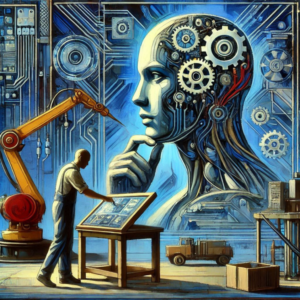The rapid growth of network devices and data in customized manufacturing has exposed the limitations of traditional cloud computing and AI systems, particularly with latency and real-time processing. This has led to the adoption of edge intelligence, combining AI with edge computing to process data closer to its source. By deploying AI at the network’s edge, manufacturers can reduce latency, improve real-time decisions, and boost efficiency. The integration of edge cloud technologies further enhances this capability, ensuring faster, more responsive solutions in manufacturing settings.
Key Functions of Edge Intelligence
Edge intelligence includes several key functions that are vital for customized manufacturing:
- Collection: Advanced sensor technologies enable edge devices to gather data efficiently from various sources in real time. This involves smart passive sensors (SPSs) and intelligent detection and ranging (iDAR) systems, which monitor critical parameters like temperature, pressure, and distance.
- Communication: The large volume of collected data requires strong communication technologies. Device-to-device (D2D) communication enhances data transmission capabilities, allowing for real-time sharing and processing of information.
- Computing: Edge computing provides the computational resources needed at the network’s edge, enabling timely data processing and reducing the need to send data back to centralized cloud servers.
- Caching: Edge caching temporarily stores real-time data at the edge, improving information distribution and decreasing latency in data retrieval.
- Control: Edge intelligence supports better control mechanisms for manufacturing processes, enabling adaptive responses based on real-time data.
- Collaboration: Edge devices can work together to complete tasks more efficiently, leveraging their geographic proximity to boost performance and user experience.
These functions collectively create a more agile and responsive manufacturing environment, capable of adapting to the ever-changing demands of customized production.
Cloud Computing and Artificial Intelligence-Enabled Architecture of Intelligent Manufacturing Factory
The architecture of cloud computing and artificial intelligence in intelligent manufacturing is designed to enhance the capabilities of traditional cloud systems by distributing processing power and storage closer to the data source. This architecture consists of four primary domains:
- Device Domain: This includes field devices such as sensors, robots, and machine tools, which are essential for establishing a flexible communication infrastructure that supports various protocols.
- Network Domain: Utilizing Software Defined Networks (SDNs) and Time Sensitive Networking (TSN) protocols, this domain ensures efficient data transmission and management of network resources.
- Data Domain: This domain focuses on data optimization, including cleaning and feature extraction, to improve the quality and availability of industrial data.
- Application Domain: This domain integrates applications across the network, data, computing, and control layers, enabling dynamic management and scheduling of manufacturing resources.
The integration of these domains allows for a seamless flow of information and decision-making processes, significantly enhancing the efficiency of customized manufacturing operations.
Key Technologies in Cloud Computing and Artificial Intelligence for Customized Manufacturing
Several key technologies strengthen the implementation of cloud computing and artificial intelligence in customized manufacturing:
- Edge Computing Node Deployment: This involves strategically placing edge computing nodes within the manufacturing environment to optimize data processing and minimize latency. The deployment strategy considers the location of data sources and the required computational power.
- Proactive Caching: This technology anticipates data needs and stores relevant information at the edge, reducing delays in data access and improving overall network performance.
- Thing–Edge–Cloud Collaborative Computing: This method facilitates collaboration between IoT devices, edge nodes, and cloud resources, allowing for efficient decision-making and resource allocation.
- Resource Scheduling Strategies: Effective scheduling strategies are crucial for managing the dynamic nature of customized manufacturing. These strategies ensure that resources are allocated efficiently based on real-time demands and operational constraints.
- Cognitive Capabilities: By leveraging AI and machine learning, edge computing can enhance cognitive abilities, enabling devices to learn from data and make informed decisions autonomously.
Validation of Key Methods of Edge Intelligence in Smart Manufacturing
Validating edge intelligence methods is essential for ensuring their effectiveness in real-world manufacturing scenarios. Key validation methods include:
- Knowledge Reasoning and Sharing: This involves creating a knowledge base that allows devices to share insights and learn from previous experiences, which enhances decision-making processes.
- Adaptive Transmission Optimization: This method focuses on optimizing data transmission paths and protocols to reduce latency and improve the reliability of data delivery in manufacturing environments.
- Intelligent Production Edges Design: This design approach incorporates intelligent decision-making capabilities into production edges, enabling them to respond dynamically to changing conditions and requirements.
Conclusion
Cloud computing and artificial intelligence are transforming customized manufacturing by overcoming the limitations of traditional systems. Leveraging edge computing technologies improves operational efficiency, reduces latency, and enhances real-time decision-making. The architecture and technologies, like Edge Computing in Manufacturing, create a framework for implementing edge intelligence, leading to more agile and responsive production. As the industry evolves, integrating cloud computing and AI will be crucial in shaping the future of customized manufacturing and meeting the demands of a dynamic market.
In summary, cloud computing and artificial intelligence not only enhance the capabilities of manufacturing systems but also foster innovation and competitiveness in the era of Industry 4.0.
Do you like to read more educational content? Read our blogs at Cloudastra Technologies or contact us for business enquiry at Cloudastra Contact Us.
